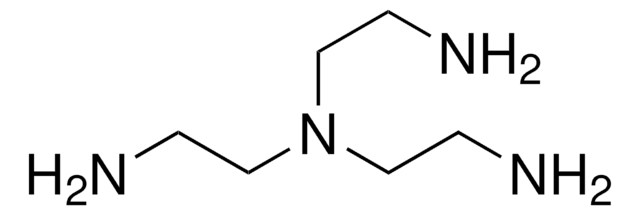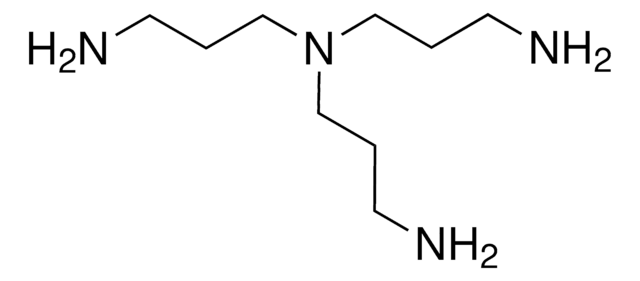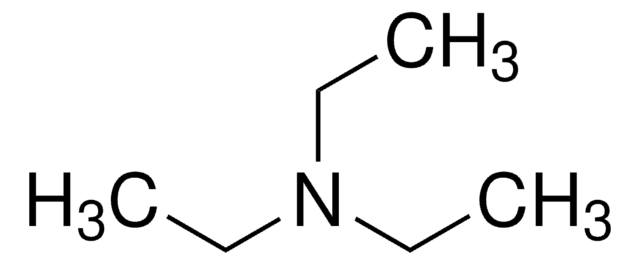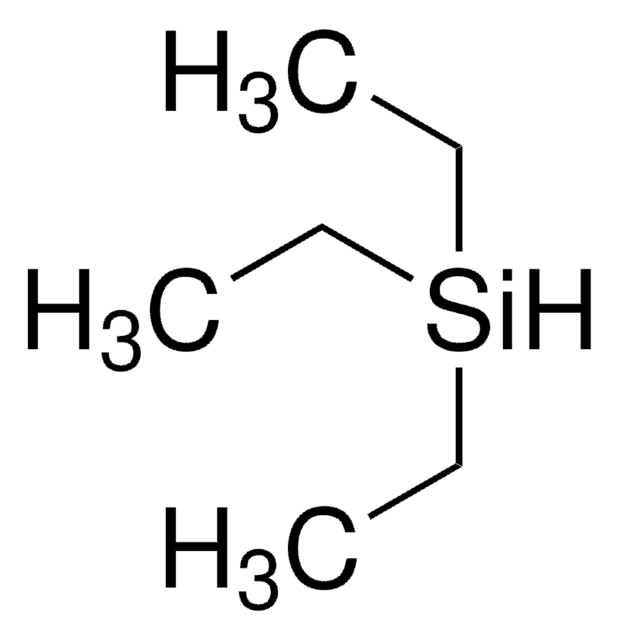All Photos(2)
About This Item
Linear Formula:
NH2CH2CH2(NHCH2CH2)2NH2 · xH2O
CAS Number:
Molecular Weight:
146.23 (anhydrous basis)
EC Number:
MDL number:
UNSPSC Code:
12352100
PubChem Substance ID:
NACRES:
NA.22
Recommended Products
vapor density
~5 (vs air)
Quality Level
vapor pressure
<0.01 mmHg ( 20 °C)
Assay
98%
form
liquid
bp
272 °C (lit.)
mp
45-48 °C (lit.)
functional group
amine
storage temp.
−20°C
SMILES string
O.NCCNCCNCCN
InChI
1S/C6H18N4.H2O/c7-1-3-9-5-6-10-4-2-8;/h9-10H,1-8H2;1H2
InChI key
XJFQPBHOGJVOHU-UHFFFAOYSA-N
Related Categories
Application
Triethylenetetramine hydrate has been used as solvent to develop cellulose collector with immobilized triethylenetetraminepentaacetic acid groups for multielement preconcentration in flow system.
Signal Word
Danger
Hazard Statements
Precautionary Statements
Hazard Classifications
Acute Tox. 4 Dermal - Aquatic Chronic 3 - Skin Corr. 1B - Skin Sens. 1
Storage Class Code
8A - Combustible corrosive hazardous materials
WGK
WGK 2
Flash Point(F)
235.4 °F - closed cup
Flash Point(C)
113 °C - closed cup
Personal Protective Equipment
dust mask type N95 (US), Eyeshields, Gloves
Regulatory Information
危险化学品
Choose from one of the most recent versions:
Already Own This Product?
Find documentation for the products that you have recently purchased in the Document Library.
Cellulose TETPA: a chelating collector designed for multielement preconcentration in flow systems.
Burba P, et al.
Fresenius Journal of Analytical Chemistry, 346(4), 414-419 (1993)
Thien Van Truong et al.
Colloids and surfaces. B, Biointerfaces, 193, 111101-111101 (2020-05-21)
We report the first observation of an efficient, native membrane conjugation mechanism via positively charged, linear oligo-amines. Clustering of membrane fragments relies on electrostatic interactions between the net negative charge of the membranes and the positively charged, water-soluble mediators. This
Our team of scientists has experience in all areas of research including Life Science, Material Science, Chemical Synthesis, Chromatography, Analytical and many others.
Contact Technical Service









